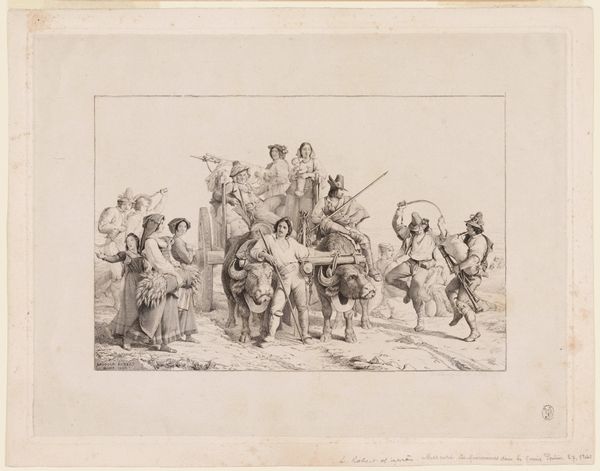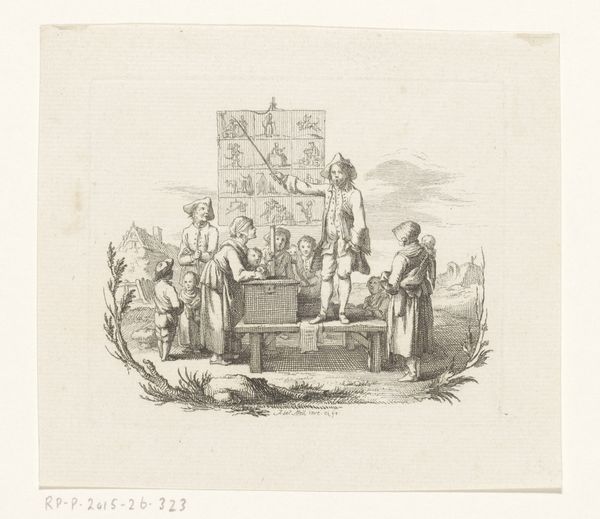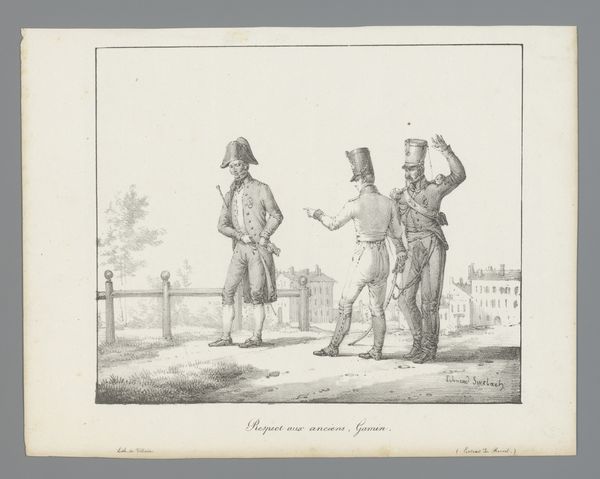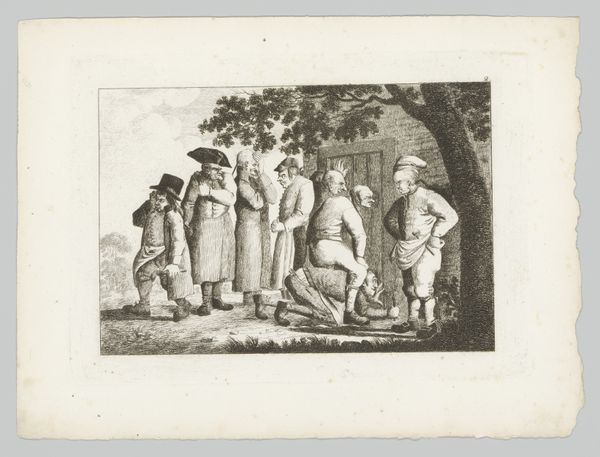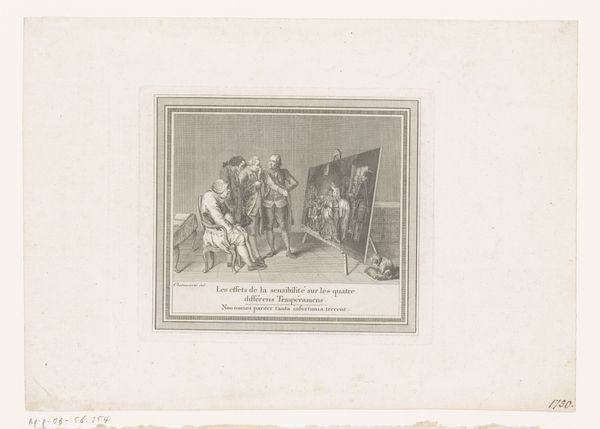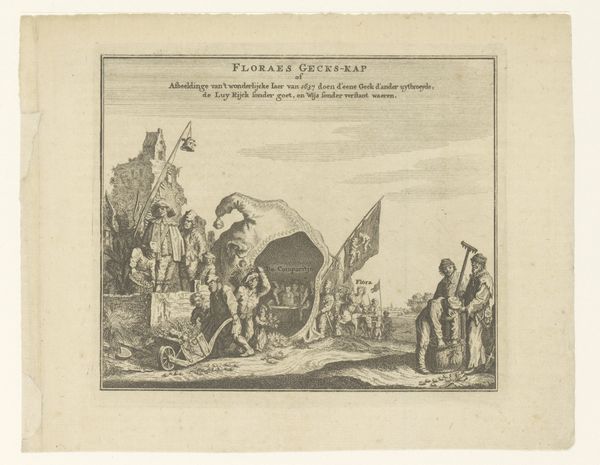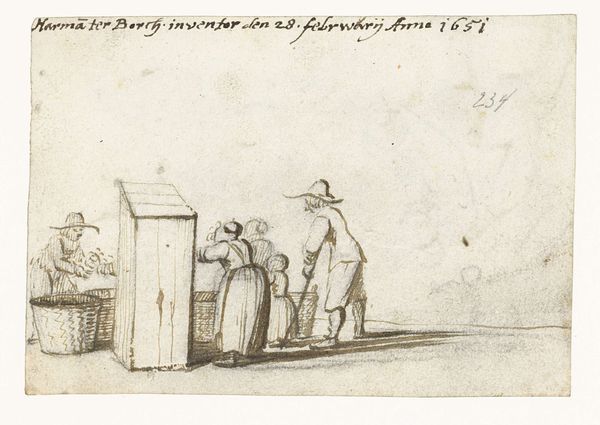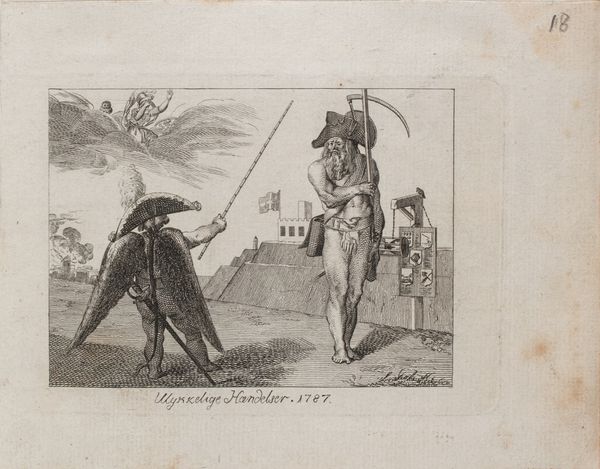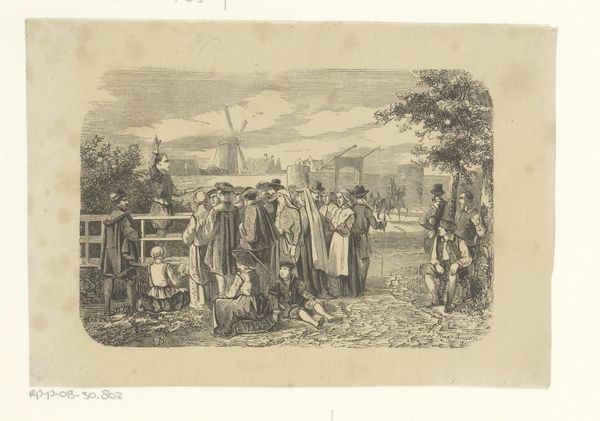
drawing, pen
#
drawing
#
narrative-art
#
caricature
#
romanticism
#
pen
#
genre-painting
Dimensions: height 210 mm, width 270 mm
Copyright: Rijks Museum: Open Domain
Curator: Here we have a pen drawing by Bernard Édouard Swebach, dating back to 1822. It's titled "Clown op podium vraagt aandacht voor populaire kranten"—"Clown on a Podium Asking for Attention for Popular Newspapers." Editor: My first impression is one of playful mockery. There's something inherently farcical about a clown promoting news. It's a composition that makes me question what the artist's intentions were, in using humor to possibly make a deeper critique about the news in the Romantic era? Curator: The figure of the clown as a commentator speaks volumes, doesn't it? The drawing can be situated in the broader historical context of Romanticism. Popular newspapers held great sway in shaping public opinion in post-revolutionary France. By portraying a clown as their advocate, Swebach invites us to interrogate the media's authority. The rise of print media created information bubbles. Editor: Absolutely! Clowns, historically, have been mirrors held up to society. The figure of the clown takes on deeper, symbolic meaning. Note the visual cues— the posters behind him remind me of town criers of old and seem an odd background. The news itself, presented in this context, feels performative, perhaps even superficial. Swebach masterfully uses caricature to reveal, on a visual level, the theatrics inherent in public life. What about the characters? Who are they looking at? Curator: Good question, there's an intentional dissonance created by juxtaposing the clown, and the oblivious group to the right. It certainly speaks to power dynamics— the privileged couple strolling along while this 'fool' vies for their attention— a reflection on social inequality. This highlights how the elite often remained detached from the everyday struggles. Editor: I see it too, it makes it such an interesting drawing in terms of political symbols. The clown on his platform is an old trickster, and it feels he has something important to say for the modern era too. He’s offering up insight and criticism, masked as a simple fool. I hadn't even considered these social inequalities between characters until now. It gives new depth to Swebach's drawing. Curator: And isn't that what makes historical artwork resonate with us even today? It holds a mirror up to our own social realities.
Comments
No comments
Be the first to comment and join the conversation on the ultimate creative platform.
